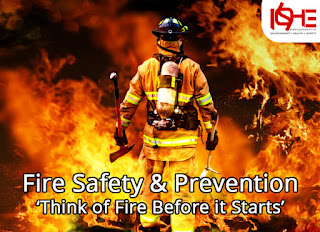Fire safety is the arrangement of practices planned to diminish the obliteration created by flame. Fire safety measures incorporate those that are expected to avoid ignition of an uncontrolled fire, and those that are utilized to restrain the improvement and impacts of a fire after it begins.
Some common fire hazards are:
Some common fire hazards are:
- Kitchen fires from unattended cooking, such as frying, broiling, and simmering
- Electrical systems that are overloaded, resulting in hot wiring or connections, or failed components
- Combustible storage areas with insufficient protection
- Combustibles near equipment that generates heat, flame, or sparks
- Candles and other open flames
- Smoking (Cigarettes, cigars, pipes, lighters, etc.)
- Equipment that generates heat and utilizes combustible materials
- Flammable liquids and aerosols
- Flammable solvents (and rags soaked with solvent) placed in enclosed trash cans
- Fireplace chimneys not properly or regularly cleaned
- Cooking appliances - stoves, ovens
- Heating appliances - fireplaces, wood burning stoves, furnaces, boilers, portable heaters
- Household appliances - clothes dryers, curling irons, hair dryers, refrigerators, freezers
- Chimneys that concentrate creosote
- Electrical wiring in poor condition
- Leaking Batteries
- Personal ignition sources - matches, lighters
- Electronic and electrical equipment
- Exterior cooking equipment - barbecue



